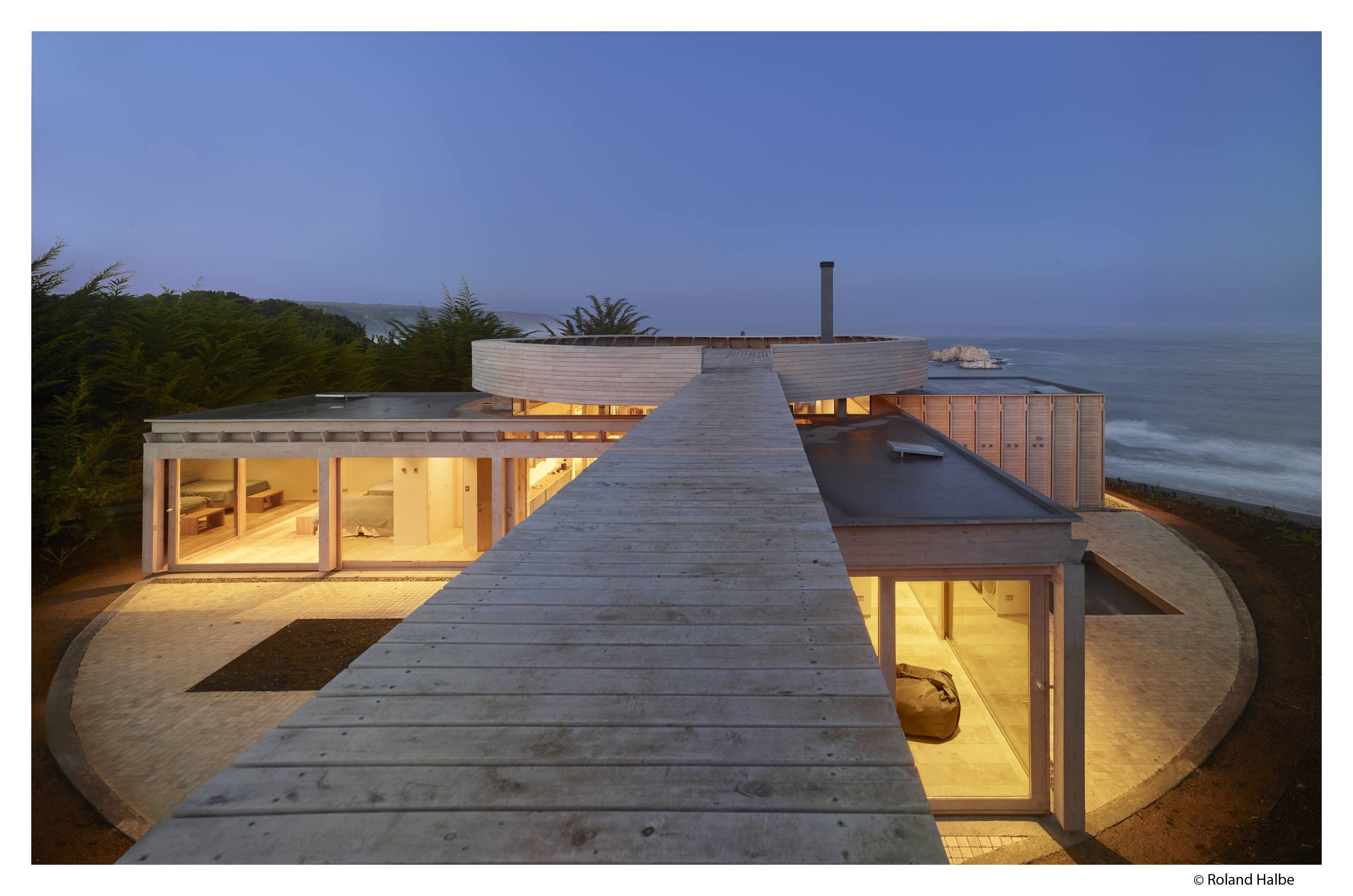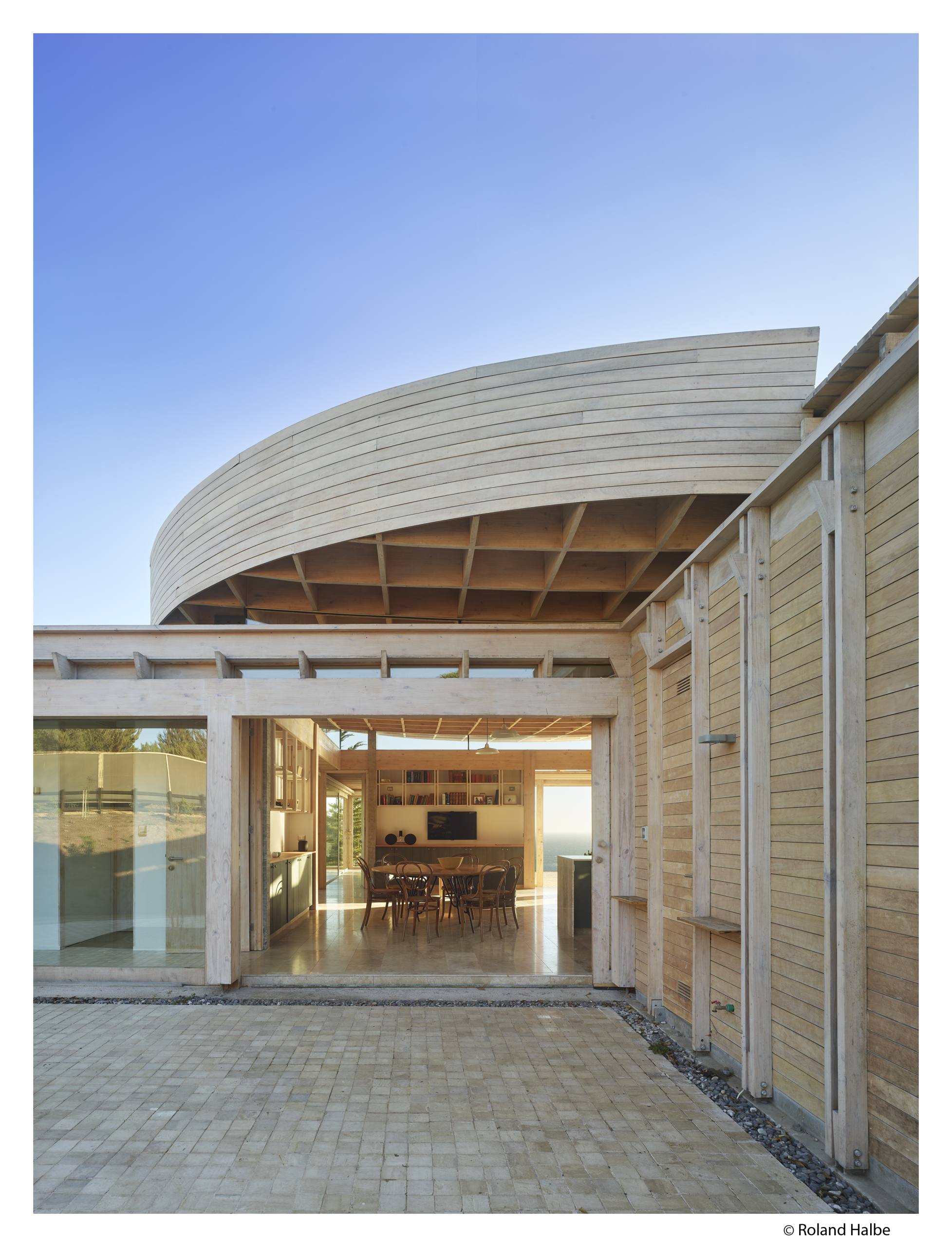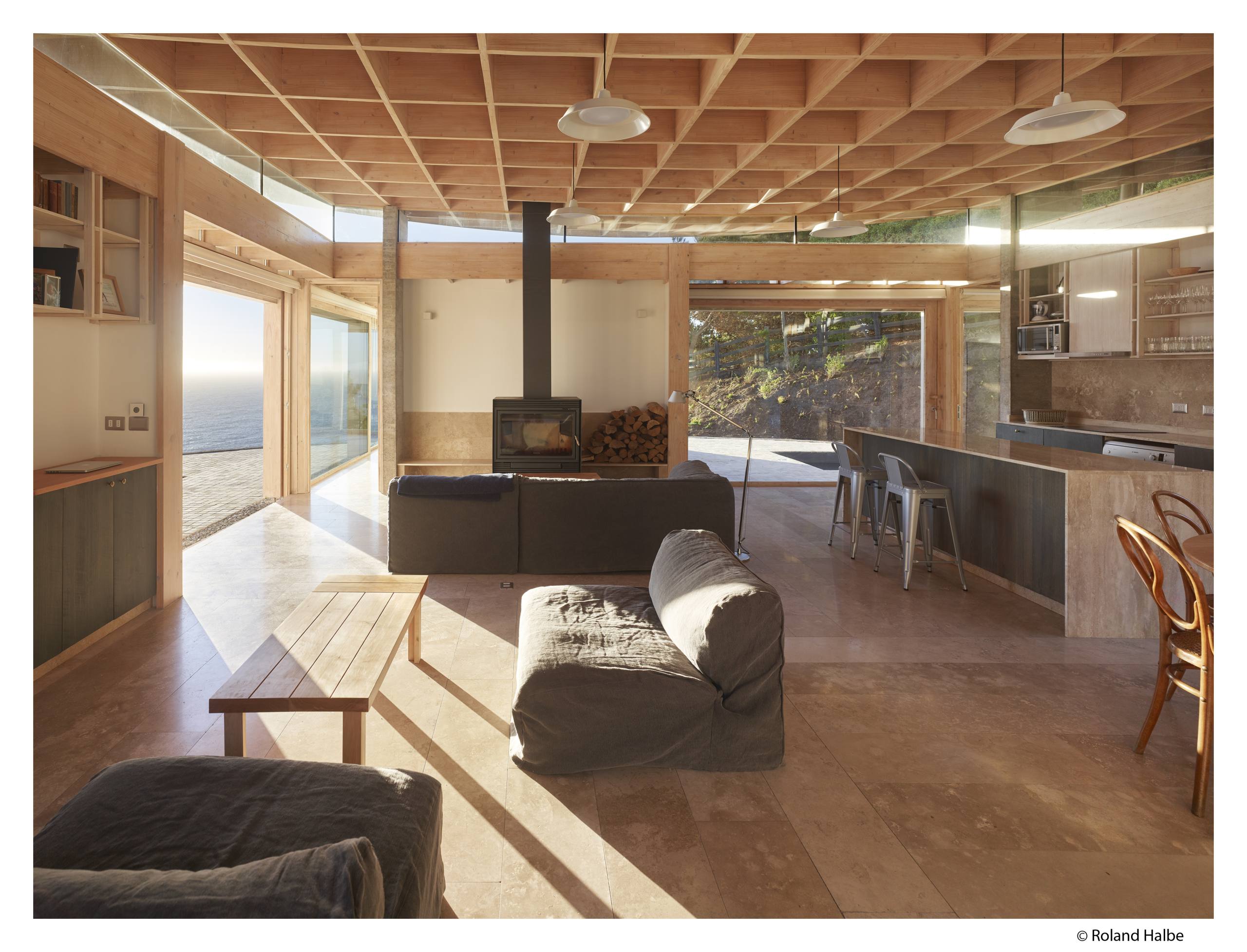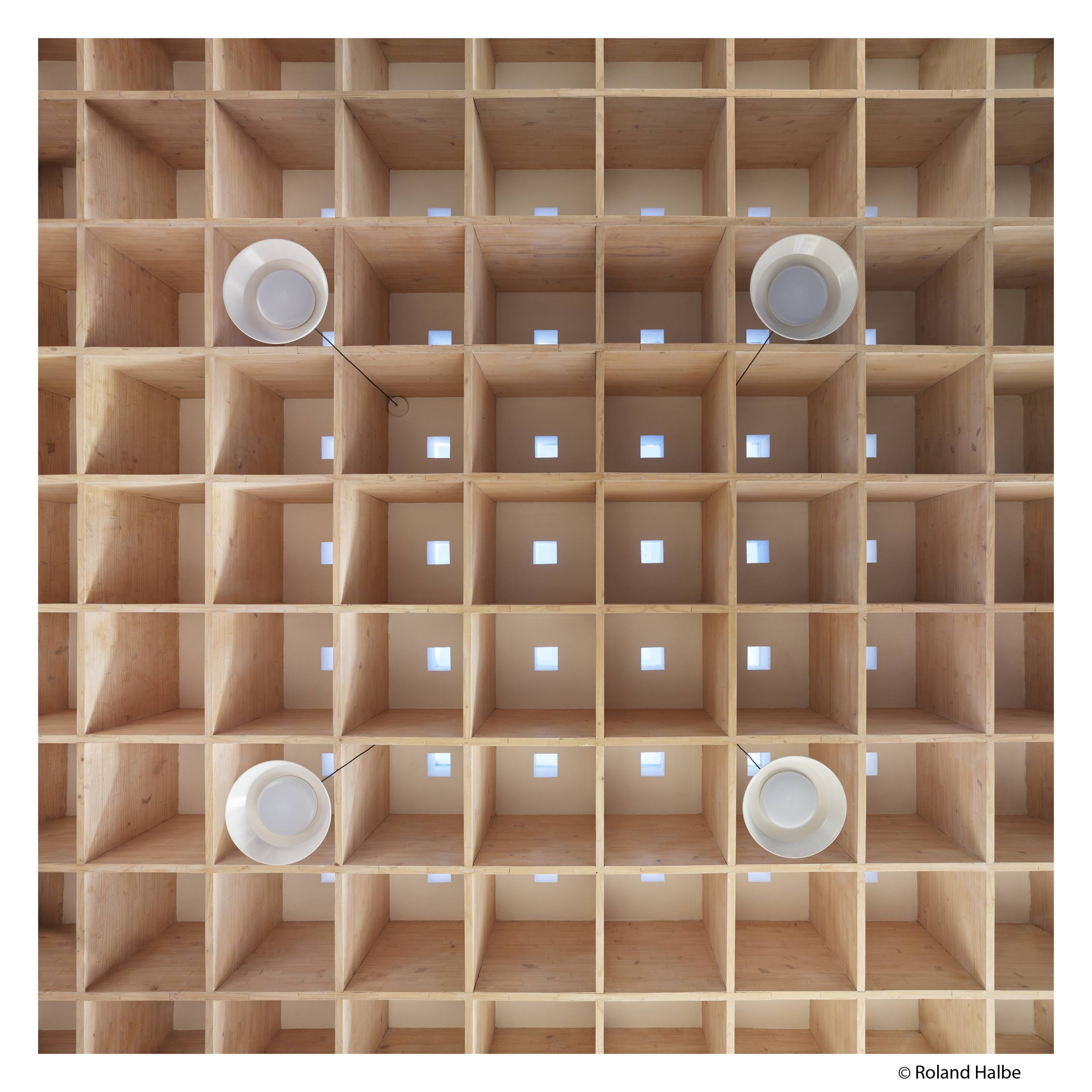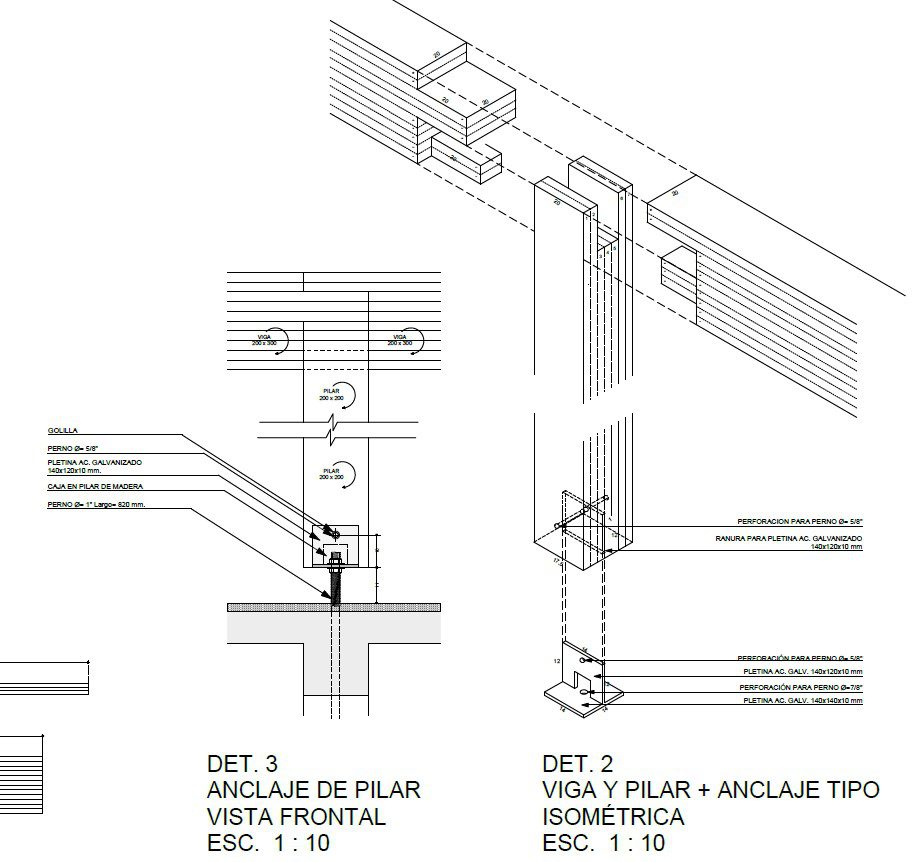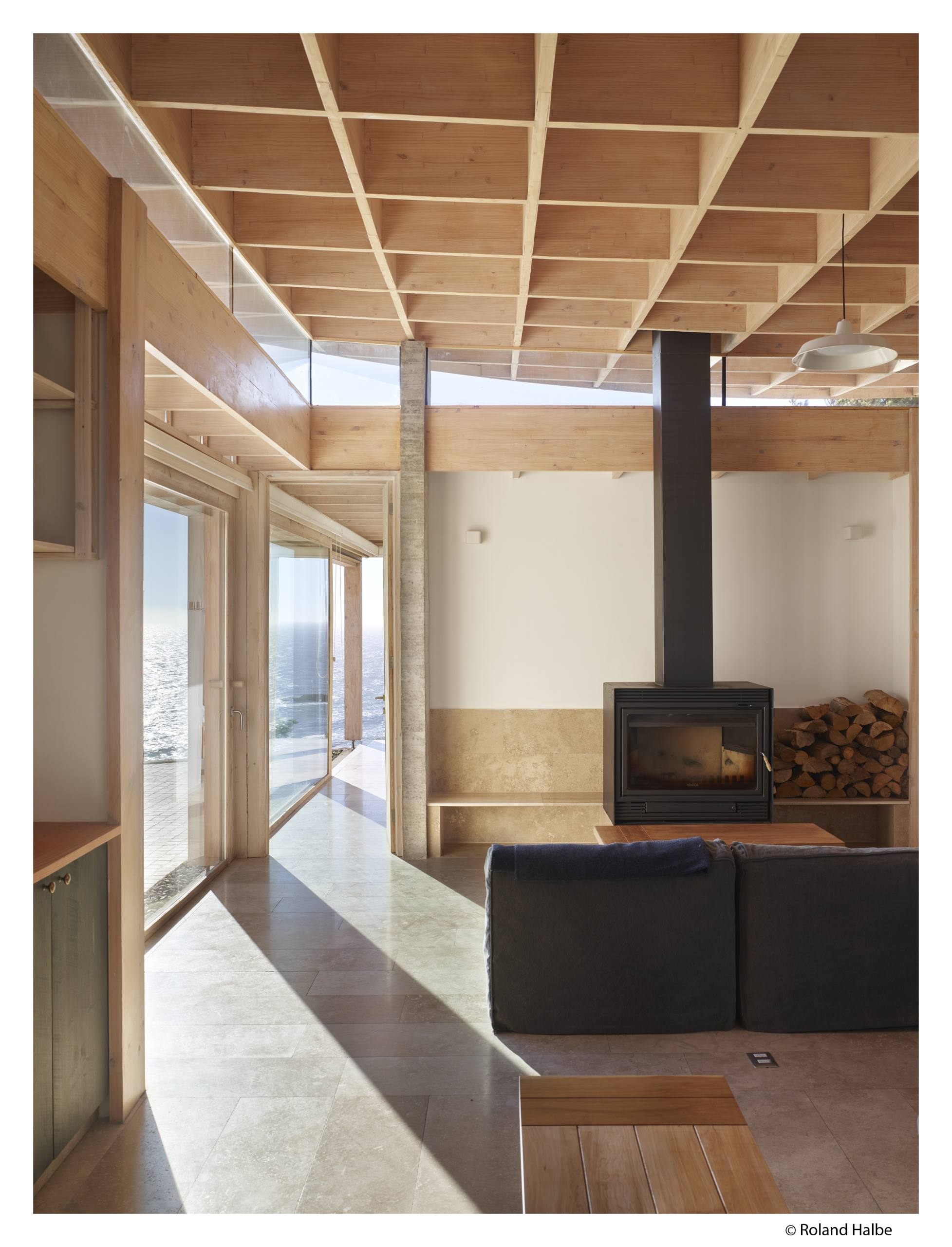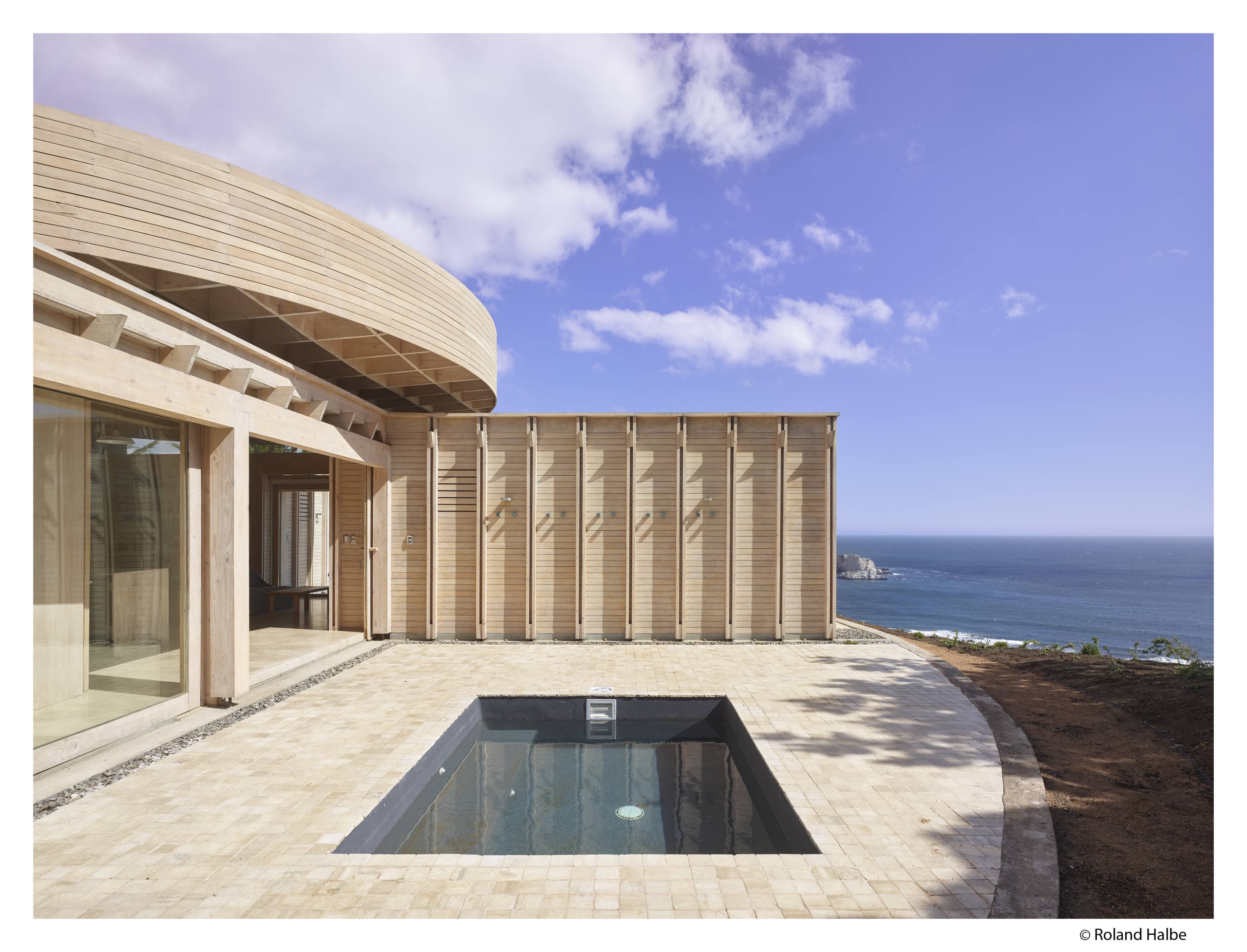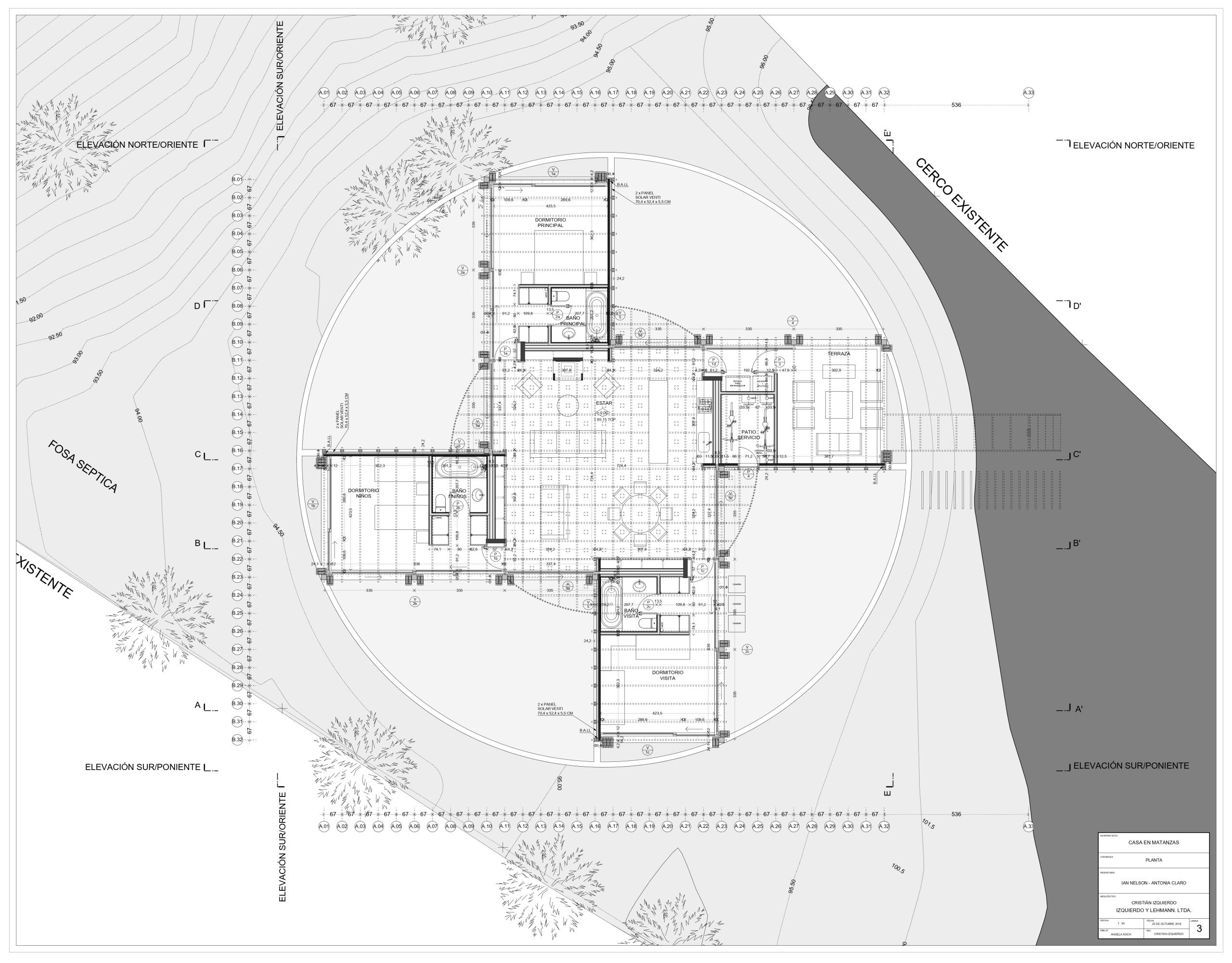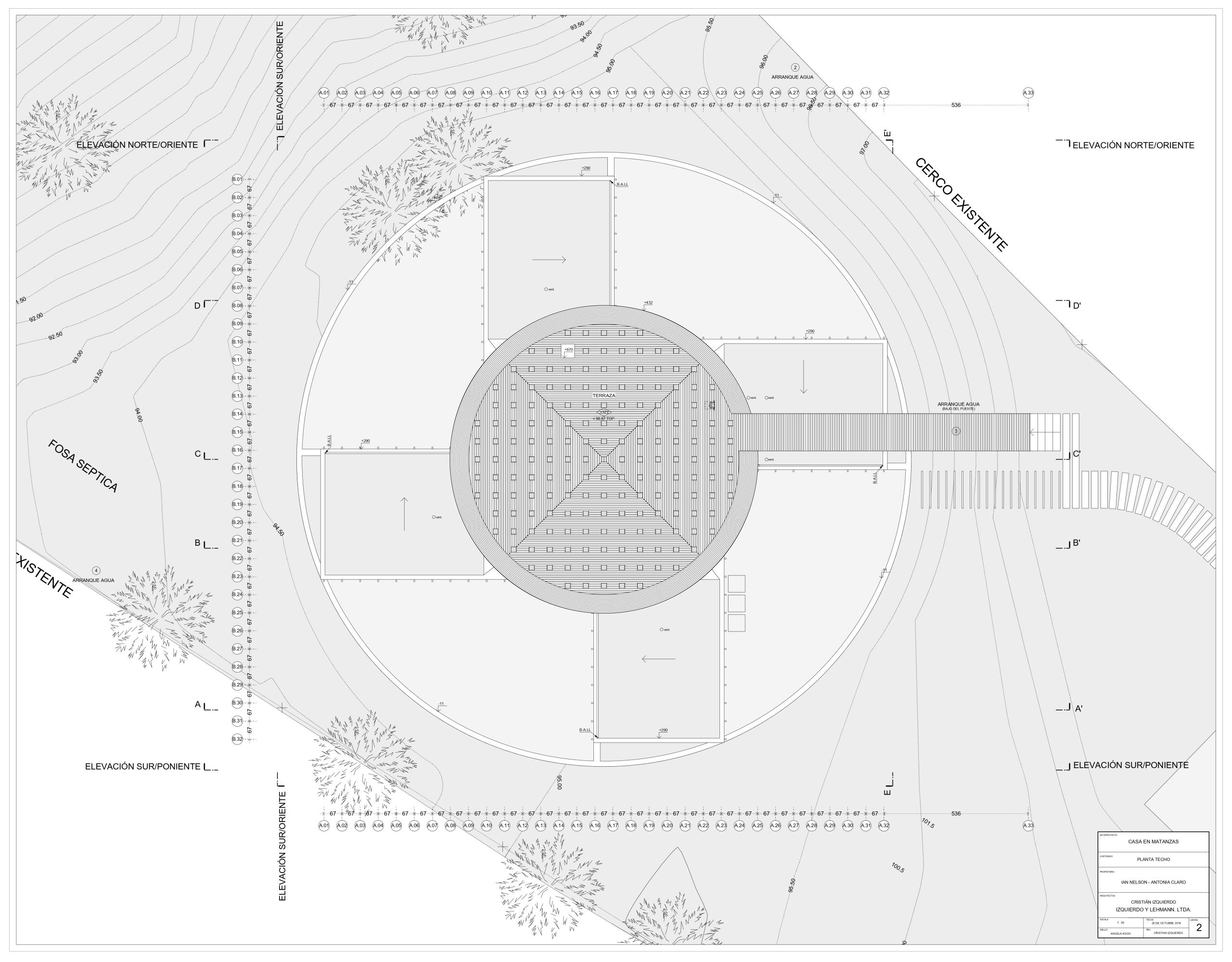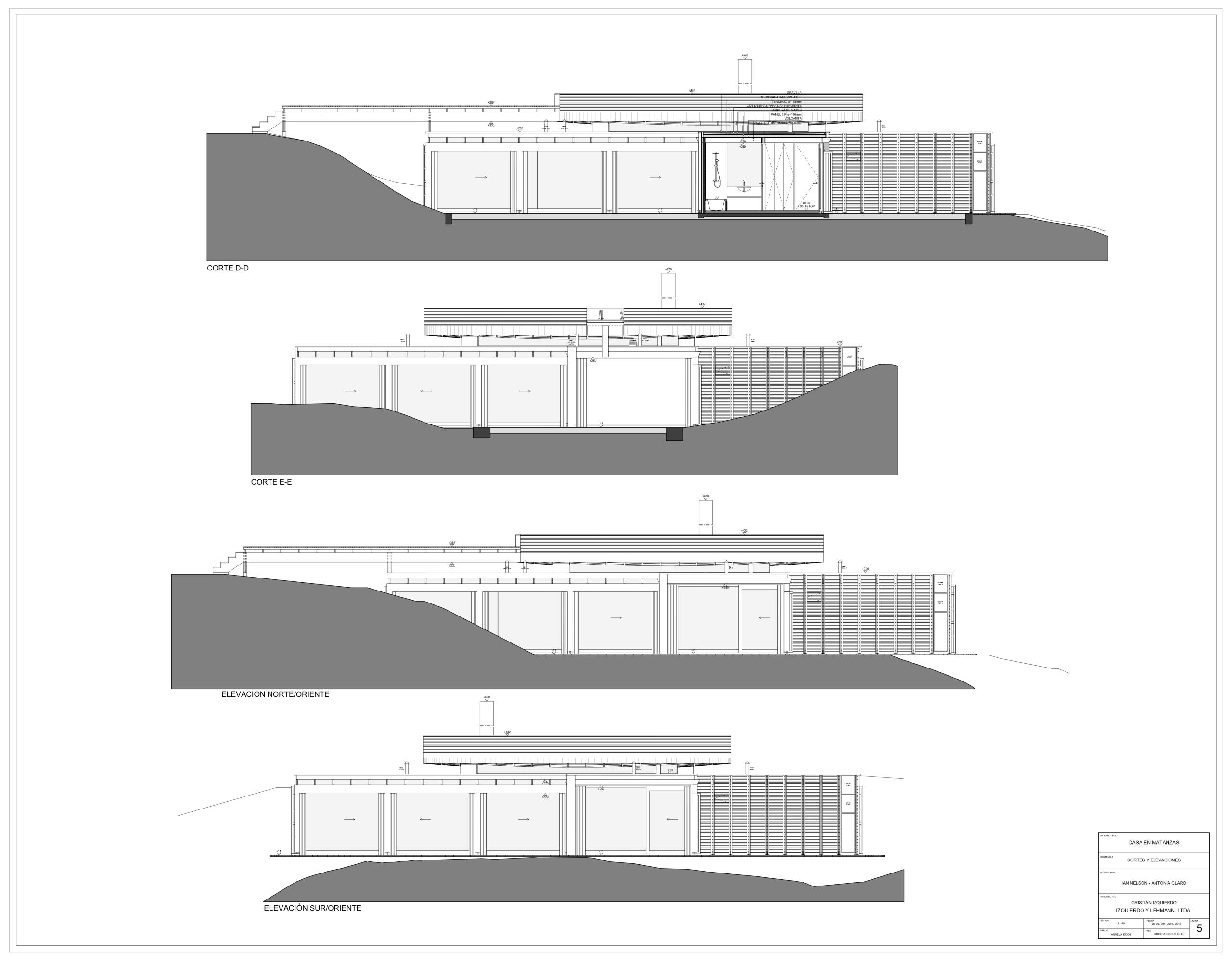House in Matanzas/
Cristián Izquierdo Lehman
Angela Koch
Project Details

Location(City/Country):
Matanzas, VI Región de O'Higgins / Chile
Tipology:
Residential
Year (Design/Construction):
2016 / 2018
Area (Net/Gross):
178 m2 / -
Operational Carbon emissions (B6) kgCO2e/m2/y:
-
Embodied Carbon emissions (A1-A3) kgCO2e/m2:
-- Modular design based on a 670mm grid.
- The structure connections allow for the disassembly of the elements at end of life
- Exposed wooden structure minimises the number of layers.
- The beams have a variable section reducing the amount of wood needed.
This house is located on the edge of a windy ravine facing the Pacific Ocean. The project is conceived as a centralized pavilion to take refuge from the landscape, and a terrace to contemplate it. The pavilion gradually opens to the outside, mediated by patios, while the terrace is suspended over the horizon in a panoramic way. Both are superimposed one on the other, almost without touching, preserving their formal integrity.
The pavilion is an exposed wooden structure governed by a continuous modulation at 67 cm., arranged on a circular base slightly separated from the ground. It is composed of a central squared room, from which four rectangular pieces emerge, forming four open courtyards at their corners. The center piece concentrates the places to cook, eat and live. Its 4 vertical enclosures are made up of a sliding window and a wall-case in a ratio of 5: 7, and are rotated symmetrically over the center of the plan, generating two continuous diagonal paths between the opposite courtyards. Each wall-case houses a different use (bookcase, TV, kitchen or fireplace) and an equal door in its corners. After these are the bedrooms, open to a patio through large windows that extend twice the modulation of the central opening, and closed to the next patio by a wall. The central piece, the bedrooms and the patios make up an interconnected space over the continuous travertine plinth.
The ceiling of the central area is arranged at a higher height, dilated from the rest of the house on 4 pillars adjacent to the doors of the bedrooms. Its structure consists of a rigid grid of variable section, which tapers to its ends as its load decreases. Each square hosts a skylight in the middle, whose systematic repetition gives a light similar to an outdoor terrace. On this roof the house develops its obverse: an open terrace without borders to contemplate aspects of the landscape that the pavilion under it suppresses. Both soils are necessary to mediate with the environment. This unity of purpose allows us to understand the different parts as members of the same whole.
- Architects: Cristián Izquierdo Lehmann
- Collaborator: Angela Koch
- Photographer: Roland Halbe
